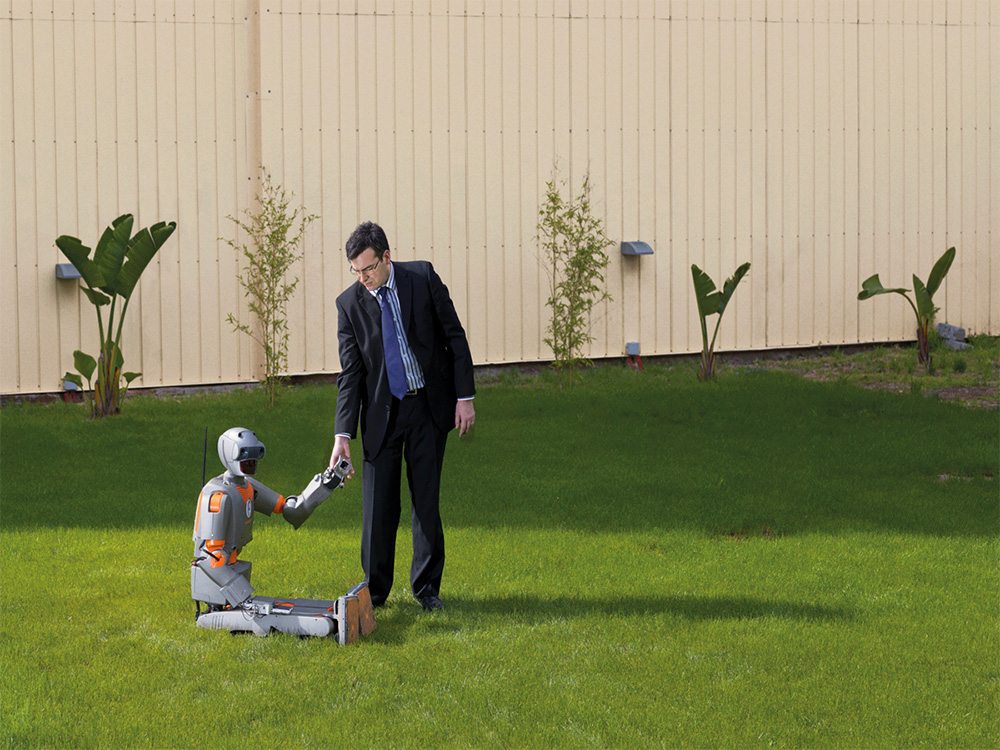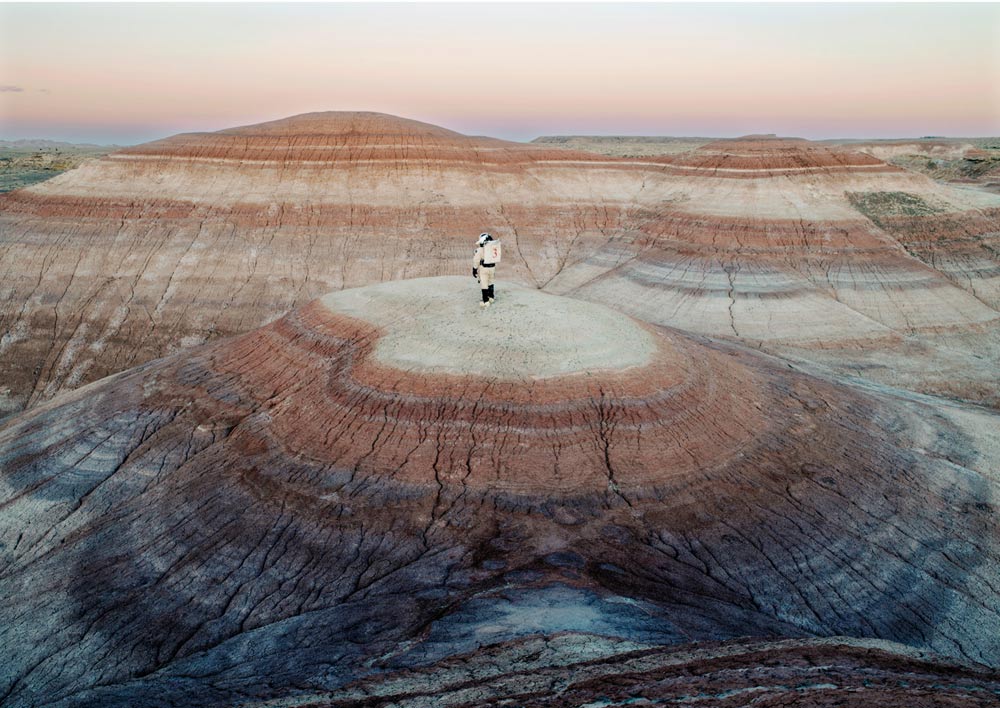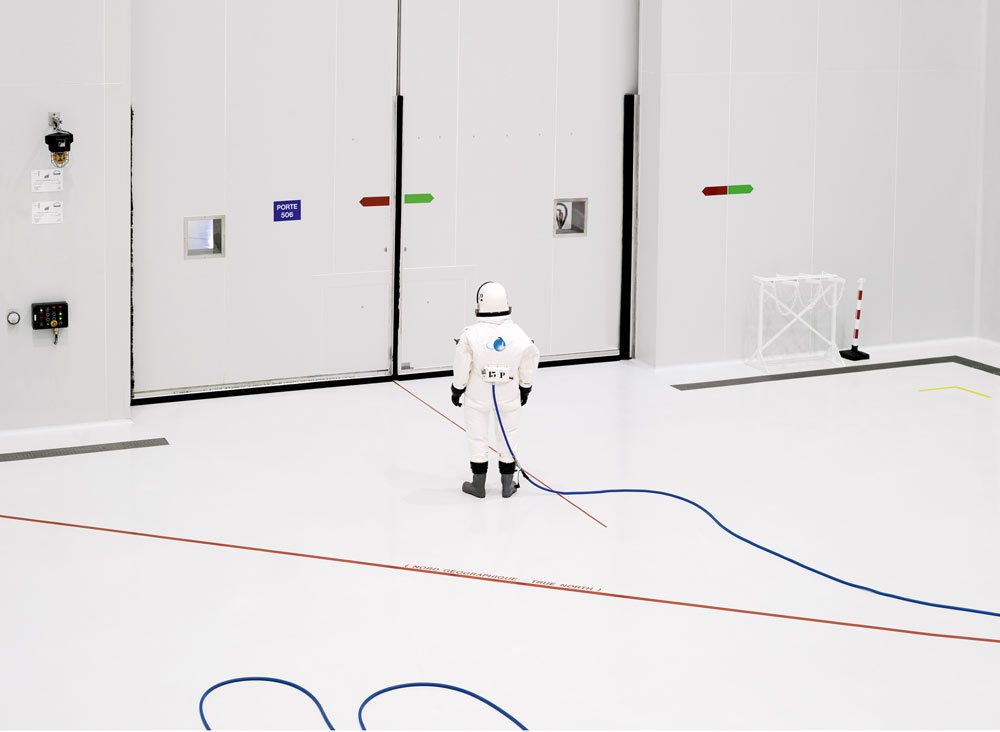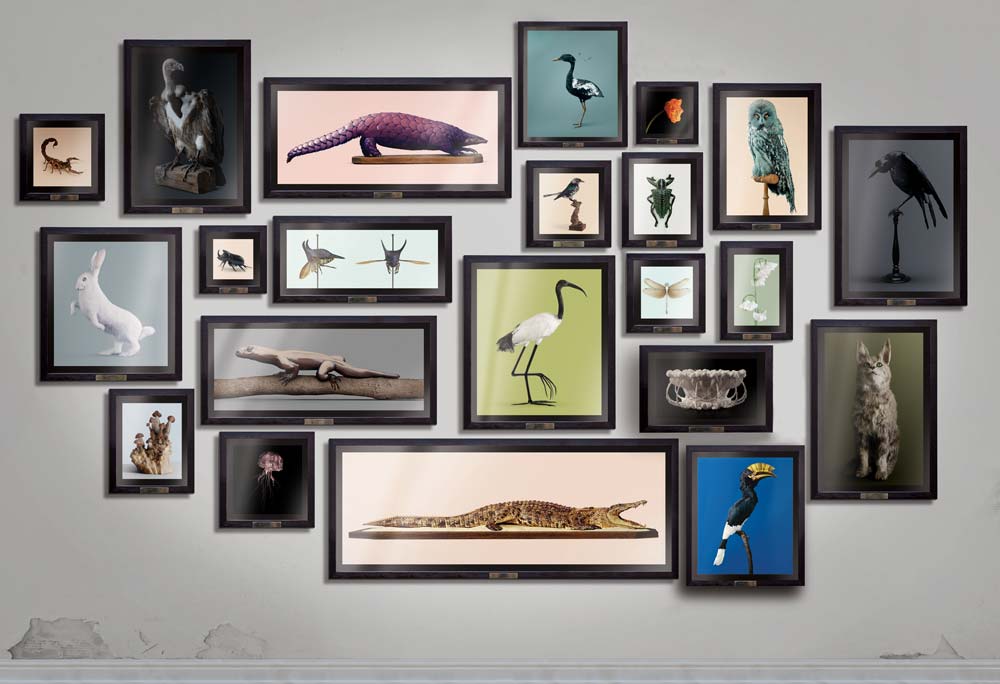INTERVIEW
Reality and perception, the living and the artificial
WITH VINCENT FOURNIER
“[My] photographs play with reality and perception, the true and the false, the living and the artificial”.
Vincent Fournier claims that the photography is about seeing and then choosing. It can be summarized for him as a matter of choice. His works are fuelled by a fascination of science and of different forms of utopia, and are executed with a perfect balance of childlike inquisitiveness and crisp, mature clarity. They are beautiful, poetic visions of the world; the real and the imagined.
You describe your work as “the imaginary and fantasy side of science”. Do you have a background in science? Where do you think this focus comes from?
No I don’t have any scientific back ground. This interest may come from childhood I guess, like many things in life. This fascination could certainly be attributed to the numerous afternoons spent with my parents visiting the ‘Science Museum’ in Paris, discovering some amazing installations.
Observe the stars, travel in space, make life or reprogram it, see the invisible… In scientific and technological research it is always the part of dreams and of mystery which interests me. Between Jules Verne and Jacques Tati, Charles Darwin and David Cronenberg, I play with certain forms of utopia to use the fictional and wonderful potential of science.
I like composing images where the sense and the non-sense mix. My photos question the world which surrounds us by creating shady, improbable, sometimes inconsistent situations, always on the border of serious history and childhood dreams.
I particularly like your series ‘The Man Machine’. The placement of robots in human situations is quite surreal – Sometimes amusing, sometimes quite unsettling. Can you tell us a bit more about this body of work?
I worked with a series of robots humanoids in daily situations: in work, in the house, in the street, during leisure activities… Imitations of every day where the robot acts out our everyday lives in the same way as a human being. It is about speculative fictions imagined from our present.
I collaborated with various Japanese robotic research laboratories. I tried to create a balance between the spectator and the robot, between a process of identification and distance. This principle is particularly visible in the movie “The Man Machine” where the situations suggest an empathy with the robot and at the same time a certain remoteness. We find this idea in the “the Uncanny Valley “.A scientific theory of the Japanese roboticist Masahiro Mori, according to which the more a robot resembles a human being, the more its imperfections seem monstrous to us.

The series ‘Space Project’ is probably your best known work and comprises images from Russian, Kazakhstan and American space centers. How did you persuade these space agencies to let you into their facilities to take photographs? I imagine these environments to be quite secret and sensitive to prying eyes…
Space Project is a subjective inventory of the most representative places, objects or situations regarding space exploration. I have photographed the Yuri Gagarin Cosmonaut Training Center of Star City in Russia; the Baikonour Cosmodrome in Kazakhstan; the Space Centers of the NASA in Cape Canaveral in the United States; Ariane Espace in Guiana; the observatories in the Atacama desert in Chile, in New Mexico, and in Nevada; the Mars Desert Research Station of Martian simulation in the Red Desert of Utah… The access to these locations takes a lot of time due to the security level. Sometimes it took me a year to gain authorisation and I then had only 2 hours to work. That restriction is very interesting for creativity.


Your series ‘Post Natural History’ is “a collection of imagined ‘upcoming living species’ presented in the form of old-fashioned encyclopaedic entries”. Can you tell us a bit more about how these ‘species’ came about? Did you collaborate with scientists and researchers to invent them? More practically, how were the models made and photographed?
The Post Natural History project show the imaginary archives of a collection of “upcoming living species”, staged in the style of a cabinet of curiosity. I met a specialist in synthetic biology to discuss the possibilities of how living species could evolve according to technology and changing environment. I was interested in the idea of exaggerating the present in order to create speculative fiction.
At first I choose the species for an aesthetic reason, then I simply exaggerated features; a gesture, a texture, a detail… I didn’t want the transformations to be over-stated, nothing spectacular. That way the viewer is not certain whether the species is real or not, or even when and how it was made. To me it is important that the species themselves are objects of beauty, with the transformation being initially unclear. For instance when you first look at the Dragonfly [Chloromgonfus detectis] nothing indicates that it is anything more than a normal Dragonfly. It is only when you have a closer look that you find out the abdomen is made of glass, and the scientific caption accompanying the image gives you the explanation: Its body is a censor to detect traces of volatile inorganics.
All images © Vincent Fournier


